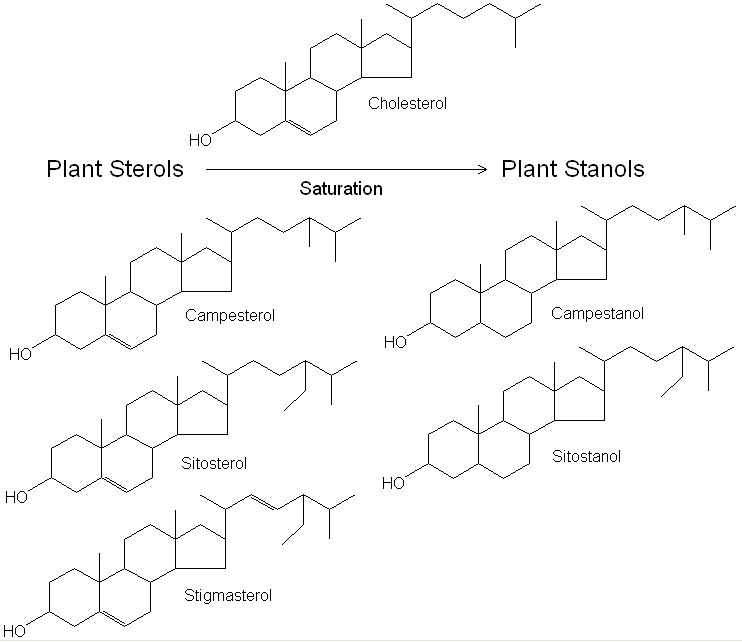Cholesterol is an important lipid in humans because it is used to synthesis a number of hormones. Sterols and stanols are plant compounds that share a structural relationship with cholesterol because they possess the same ring structure as cholesterol but have different side chain configurations (figure 1). The side chains of sterols are unsaturated, but the side chains of stanols are saturated with hydrogen. Sterols and stanol are not synthesised by humans and so only plant food provides a source. Stanols are less abundant in the diet than sterols, with vegetable oils, nuts, cereals and beans being good sources. The two most abundant sterols are β-sitosterol and stimasterol, and two of the most abundant stanols are campestanol and sitostanol. Research has estimated the intake of sterols and stanols to be roughly 160 to 360 mg per day.
 Figure 1. The chemical structures of cholesterol, sterols and stanols1.
Figure 1. The chemical structures of cholesterol, sterols and stanols1.
Sterols and stanols are absorbed at a slower rate than cholesterol, but their excretion rate in bile is faster, which results in a low plasma concentrations even with high dietary intakes. Plant sterols and stanols have a greater affinity for micelles than cholesterol and can displace cholesterol during absorption because they are more hydrophobic. High intakes of sterols and stanols are therefore able to limit the absorption of cholesterol. In response to the reduced absorption of cholesterol from the diet, the liver increases synthesis of endogenous cholesterol and LDL receptor expression is unregulated. This causes a reduction in the plasma levels of LDL cholesterol, which may be beneficial in preventing cardiovascular disease. Research has shown that it is not necessary to consume sterols or stanols at the same meal as cholesterol to have this cholesterol lowering effect.
RdB
